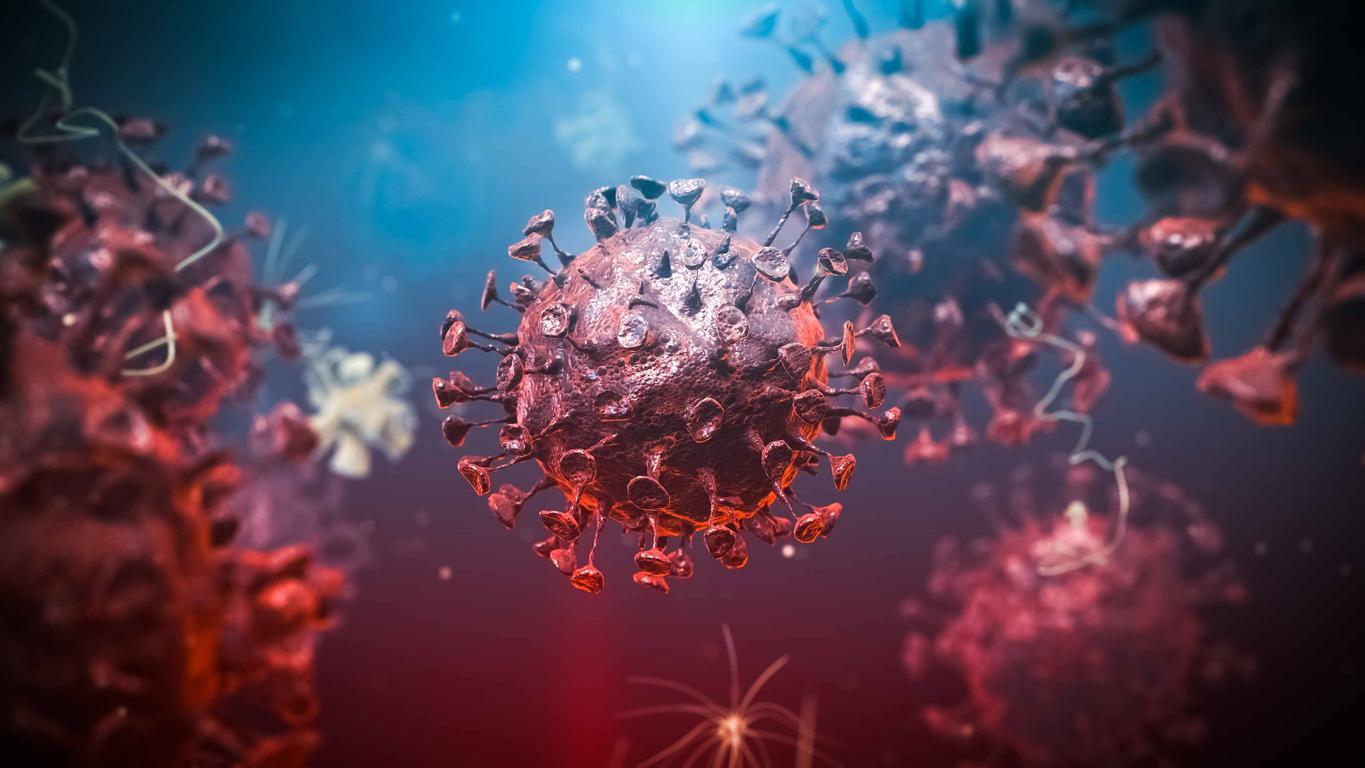Probably originating in the world of bats, SARS-CoV-2 is introduced to humans but also to other living beings, not necessarily human, according to a new study from the University of California Davis.

- According to a comparison of the human ACE2 receptor with that of other vertebrates, great apes are most susceptible to contracting Covid-19 via ACE2.
- Bats, suspected to be the primary host of this virus, have an ACE2 very different from that of humans.
- If ACE2 is only one key among others to explain the intrusion of Covid-19 into the body, this reading grid can guide research to understand how this virus probably originating from bats is reached man.
What if this pandemic was not just a human affair? In a study published August 21 in the peer-reviewed American journal, Proceedings of the National Academy of Sciences, a group of researchers from American universities wanted to know if other transmissions between species were possible and if so which animals would be the most vulnerable. To answer this question, the scientists compared the receptor of the human angiotensin-2 converting enzyme (ACE2) – the main gateway to our body for the SARS-CoV-2 responsible for the Covid-19 epidemic -, with that of 410 other vertebrates, including 252 mammals.
“Animals with the 25 amino acid residues corresponding to the human protein [NDLR : d’ACE2] should be most at risk of contracting SARS-CoV-2 via ACE2says Joana Damas, a lead author on the paper and a postdoctoral research associate at the University of California (UC) Davis. The risk should decrease the more the ACE2 binding residues of the species differ from those of humans.”
We threaten our closest cousins
Unsurprisingly, humans can very easily transmit the virus to other catarrhines, our very close genetic relatives, that is to say most of the primates of Africa and Asia. Thus we can easily contaminate gorillas, chimpanzees, orangutans, baboons or macaques via our very close receptor ACE2. Bad news for biodiversity since most of these species are vulnerable, even critically endangered, such as the western lowland gorilla, the Sumatran orangutan and the northern white-cheeked gibbon.
Other animals flagged as high risk include marine mammals such as gray whales and bottlenose dolphins, as well as Chinese hamsters. Domestic animals such as cats, cattle, and sheep were at medium risk, and dogs, horses, and pigs were at low risk for ACE2 binding. About 40% of species potentially susceptible to SARS-CoV-2 contamination via ACE2 are classified as “threatened” by the International Union for Conservation of Nature and may be particularly vulnerable to human-to-human transmission assures the University of California Davis. “The data provides an important starting point for identifying vulnerable and threatened animal populations at risk of SARS-CoV-2 infectionsays Harris Lewin, a lead author of the study and a professor of evolution and ecology at UC Davis. We hope it will inspire practices that protect animal and human health during the pandemic.“
Covid-19 and bats: no direct link via ACE2
If cases of infections have been documented in mink, cats, dogs, hamsters, lions and tigers, the coronavirus has not always entered the body through ACE2. As a result, the authors recommend not to overinterpret these initial data, which call for additional research.
The limit of this exercise is well embodied by the bat, and in particular the Rhinolophus sinicus also called the Chinese red horseshoe bat with which a coronavirus strongly related to that at the origin of the Covid epidemic -19 has been detected. However, this species of bat, like the others, has a very different ACE2 than humans. “It is not yet known whether bats transmitted the novel coronavirus directly to humans or whether it passed through an intermediate host, but the study supports the idea that one or more intermediate hosts were involved.” assure the authors.
Human-animal security
These data on the genetic proximity of ACE2 between humans and other animal species could help scientists target their research on the transmission mechanism. The bat remains, to this day, the main supposed source of the virus because according to the study it “harbors the greatest diversity of betacoronavirus among mammals“.
But better understanding the transmission of viruses between different species can also help prevent future contamination. The Smithsonian National Zoo (Washington DC) or the San Diego Zoo (California) notably participated in this research by providing genomic material for study. “Zoonotic diseases and the prevention of human-to-animal transmission are not a new challenge for zoos and animal care professionalsprocrastinates one of the study’s co-author Klaus-Peter Koepfli who is also a senior scholar at the Smithsonian-Mason School of Conservation. This new information allows us to focus our efforts and plan accordingly to keep animals and humans safe.”
.
















